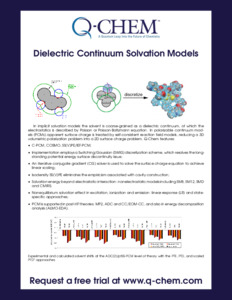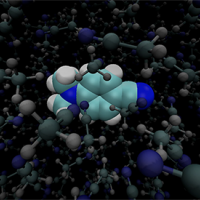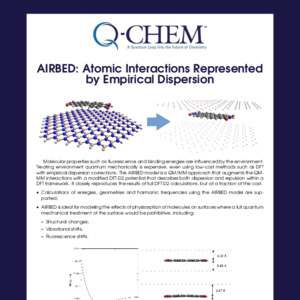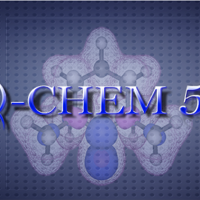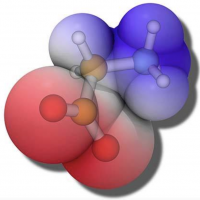Dielectric Continuum Solvation Models
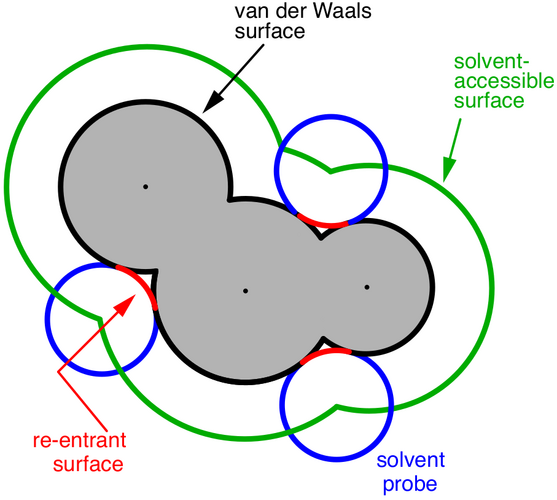
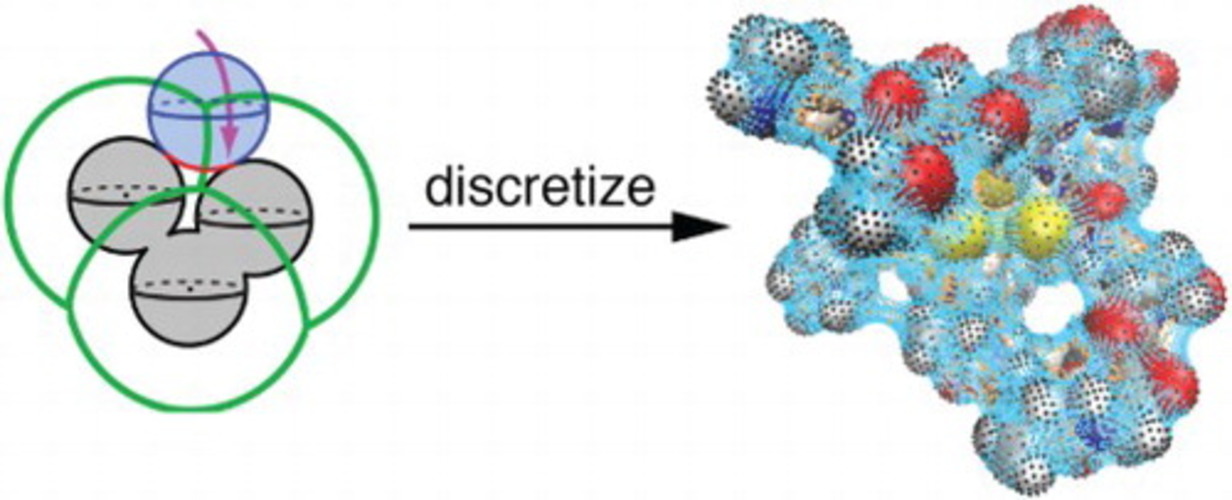
In implicit solvation models the solvent is coarse-grained as a dielectric continuum, of which the electrostatics is described by Poisson or Poisson-Boltzmann equation. In polarizable continuum models (PCMs) apparent surface charge is treated by self-consistent reaction field models, reducing a 3D volumetric polarization problem into a 2D surface charge problem. Q-Chem features:
-
C-PCM, COSMO, SS(V)PE/IEF-PCM;
-
Implementation employs a Switching/Gaussian (SWIG) discretization scheme, which resolves the long-standing potential energy surface discontinuity issue;
-
An iterative conjugate gradient (CG) solver is used to solve the surface charge equation to achieve linear scaling;
-
Isodensity SS(V)PE eliminates the empiricism associated with cavity construction;
-
Solvation energy beyond electrostatic interaction: nonelectrostatic models including SM8, SM12, SMD and CMIRS;
-
Nonequilibrium solvation effect in excitation, ionization and emission: linear-response (LR) and state-specific approaches;
-
PCM is supported in post-HF theories: MP2, ADC and CC/EOM-CC, and also in energy decomposition analysis (ALMO-EDA).

Want to try Q-Chem?
